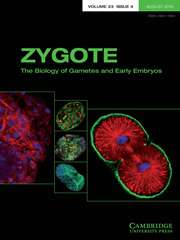No CrossRef data available.
Article contents
The effects of circadian rhythm on reproductive functions
Published online by Cambridge University Press: 10 September 2025
Abstract
Circadian rhythms are intrinsic, endogenously generated cycles that regulate various physiological processes, including reproductive functions. These rhythms are orchestrated by a network of core clock genes and are influenced by external environmental cues, primarily the light–dark cycle. Disruptions in circadian rhythms can have profound effects on fertility in both males and females, impacting processes such as the estrous cycle, ovulation, sperm production, implantation and pregnancy maintenance. This review comprehensively explores the molecular mechanisms underlying circadian rhythms and their influence on reproductive health, integrating evidence from both animal models and human studies. We delve into the intricate interplay between circadian genes, hormonal regulation and environmental factors, underscoring the critical importance of circadian integrity for optimal reproductive outcomes. The potential therapeutic implications of maintaining circadian rhythms are also discussed, highlighting novel avenues for enhancing reproductive health.
Information
- Type
- Review Article
- Information
- Copyright
- © The Author(s), 2025. Published by Cambridge University Press


